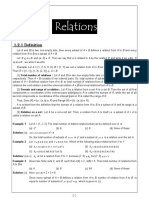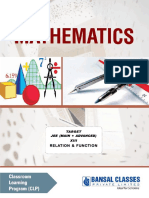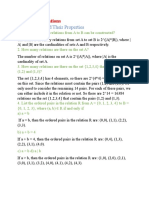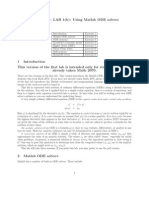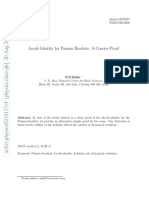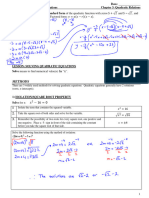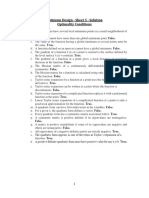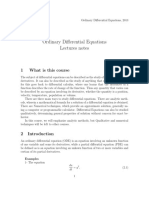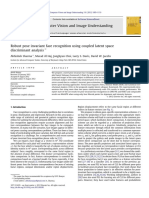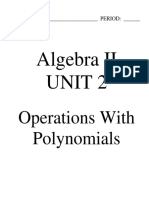0% found this document useful (0 votes)
5 views7 pagesChapter 02-Relations and Functions 1
A relation R from set A to set B is defined as a subset of the Cartesian product A × B, with various properties such as domain, range, and types of relations including empty, universal, identity, reflexive, symmetric, transitive, and equivalence relations. The total number of relations from A to B is 2^(mn) for finite sets A and B with m and n elements, respectively. Examples illustrate the characteristics of different types of relations and their properties.
Uploaded by
ffminus202Copyright
© © All Rights Reserved
We take content rights seriously. If you suspect this is your content, claim it here.
Available Formats
Download as PDF, TXT or read online on Scribd
0% found this document useful (0 votes)
5 views7 pagesChapter 02-Relations and Functions 1
A relation R from set A to set B is defined as a subset of the Cartesian product A × B, with various properties such as domain, range, and types of relations including empty, universal, identity, reflexive, symmetric, transitive, and equivalence relations. The total number of relations from A to B is 2^(mn) for finite sets A and B with m and n elements, respectively. Examples illustrate the characteristics of different types of relations and their properties.
Uploaded by
ffminus202Copyright
© © All Rights Reserved
We take content rights seriously. If you suspect this is your content, claim it here.
Available Formats
Download as PDF, TXT or read online on Scribd
/ 7




